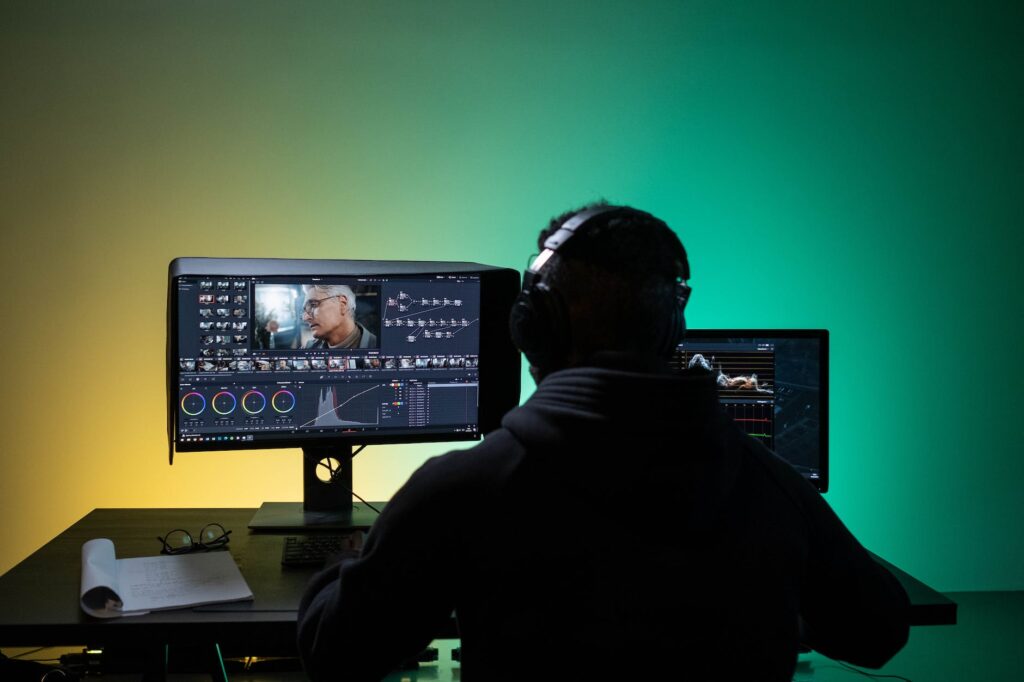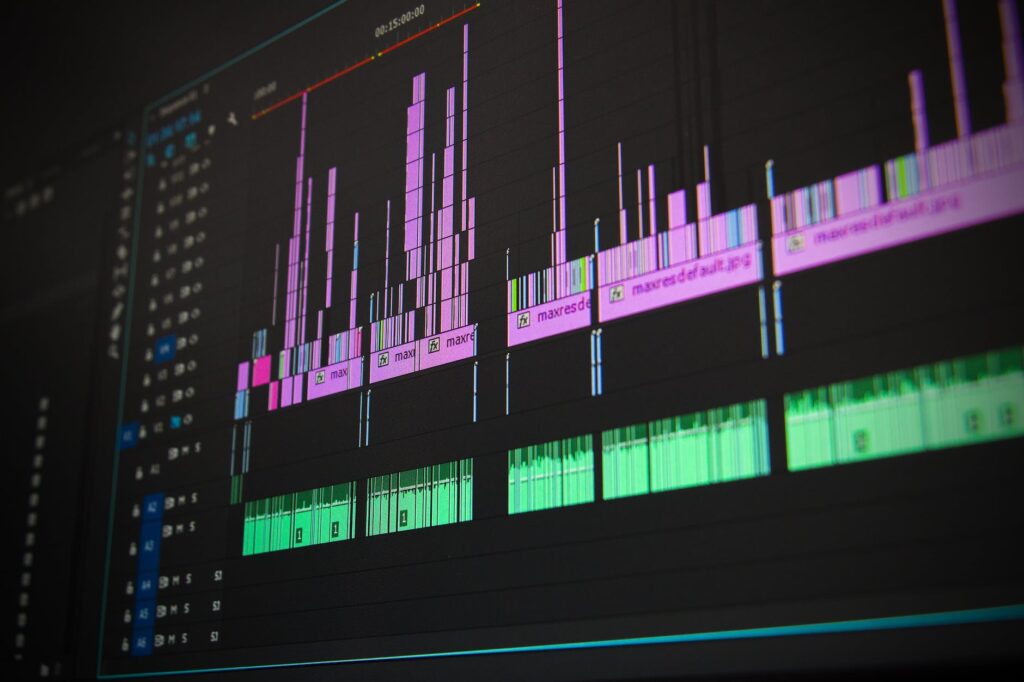Independent filmmaking has become more accessible than ever before, thanks to advancements in technology and the rise of streaming platforms. But with greater accessibility comes greater competition, and the key to standing out in the independent film world is in the editing.
Mastering independent film editing can make all the difference in creating a successful film.
Fortunately, there are industry experts who have paved the way and are willing to share their tips and tricks. In this article, we’ll explore the best practices for independent film editing, including how to establish a clear narrative, create emotional impact, and capture the attention of your audience.
With these expert insights, you’ll be on your way to creating a polished and captivating film that will leave a lasting impression. So, whether you’re a seasoned filmmaker or just starting out, read on to learn the secrets of mastering independent film editing.
The role of an independent film editor
The role of an independent film editor is to take the raw footage and turn it into a cohesive and engaging story. They work closely with the director to bring their vision to life and create a finished product that will resonate with audiences. The editor is responsible for selecting the shots, deciding on the pacing and rhythm of the film, and creating a narrative arc that will keep viewers engaged from start to finish.

It’s important for an independent film editor to have a deep understanding of the filmmaking process as a whole. This includes knowledge of camera angles, lighting, and sound design. They must be able to work with the footage and make creative decisions that will enhance the story being told. The editor is the final person to touch the film before it’s released to the public, so they must ensure that the finished product is of the highest quality.
In addition to having technical skills, an independent film editor must have strong communication skills. They must be able to work with the director and other members of the filmmaking team to understand their vision and bring it to life. They must also be able to give and receive feedback in a constructive manner in order to create the best possible film.
Essential skills for independent film editors
There are several essential skills that independent film editors must possess in order to be successful. These include:
1. Attention to detail
An independent film editor must have a keen eye for detail. They must be able to spot continuity errors, lighting inconsistencies, and other technical issues that could detract from the overall quality of the film. They must also pay close attention to the pacing and rhythm of the film in order to create a seamless viewing experience.
2. Creativity
An independent film editor must be creative in order to make the most of the footage they have. They must be able to make creative decisions that will enhance the story being told and create emotional impact. They must also be able to think outside the box and come up with unique solutions to problems that arise during the editing process.
3. Technical proficiency
An independent film editor must have a strong understanding of editing software and other technical aspects of filmmaking. They must be able to work efficiently and effectively with the tools at their disposal to create a polished finished product. They must also stay up to date with the latest software and techniques in order to remain competitive in the industry.
Understanding the editing process

The editing process is a crucial part of independent filmmaking. It’s where the raw footage is turned into a cohesive story that will resonate with audiences. The process typically involves several stages, including:
1. Selecting the footage
The first step in the editing process is to select the footage that will be used in the final film. This involves reviewing all of the raw footage and selecting the best shots for each scene. The editor must consider factors such as lighting, camera angles, and performance when making their selections.
2. Assembling the rough cut
Once the footage has been selected, the editor will assemble a rough cut of the film. This involves placing the shots in order and creating a basic narrative structure. The rough cut is often longer than the final film and serves as a starting point for further editing.
3. Refining the cut
The next step in the editing process is to refine the rough cut. This involves making creative decisions about pacing, rhythm, and emotional impact. The editor will work closely with the director to ensure that the final product aligns with their vision for the film.
4. Adding sound and music
Once the visuals have been refined, the editor will add sound and music to the film. This includes dialogue, sound effects, and a score. The sound design is an important part of the editing process and can greatly impact the emotional impact of the film.
5. Color grading and finishing touches
The final step in the editing process is to color grade the film and add any finishing touches. This includes adjusting the color and contrast to create a cohesive visual style. The editor will also add any necessary visual effects or titles to the film.
Tips for efficient editing

Editing can be a time-consuming process, but there are several tips and tricks to make it more efficient. These include:
1. Organizing the footage
Before beginning the editing process, it’s important to organize the footage in a way that makes it easy to find and use. This involves creating folders for each scene and labeling the footage with descriptive names.
2. Using keyboard shortcuts
Keyboard shortcuts can greatly speed up the editing process. It’s important to learn the most commonly used shortcuts for the editing software being used in order to work more efficiently.
3. Creating a rough cut quickly
Creating a rough cut quickly can help to streamline the editing process. This involves selecting the best shots for each scene and placing them in order to create a basic narrative structure. Once the rough cut is complete, the editor can focus on refining the details.
4. Outsourcing
Outsourcing certain aspects of the editing process can help to save time and increase efficiency. For example, hiring a sound designer to handle the sound design can free up the editor to focus on other aspects of the film.
Common mistakes to avoid in independent film editing

There are several common mistakes that independent film editors should avoid in order to create the best possible film. These include:
1. Overediting
Overediting can detract from the overall quality of the film. It’s important to strike a balance between keeping the audience engaged and not overwhelming them with too much visual information.
2. Ignoring pacing and rhythm
Pacing and rhythm are crucial elements of the editing process. It’s important to create a cohesive viewing experience that keeps the audience engaged from start to finish.
3. Failing to tell a story
At its core, filmmaking is about storytelling. It’s important to create a narrative arc that will resonate with audiences and keep them invested in the film.
Techniques for storytelling through editing
There are several techniques that independent film editors can use to tell a compelling story through editing. These include:
1. Using pacing to create tension
Pacing can be used to create tension and build suspense in a film. By manipulating the length of shots and the overall pace of the film, editors can create a sense of anticipation and keep the audience engaged.
2. Using music to enhance the emotional impact
Music is a powerful tool in the editing process. It can be used to create emotional impact and enhance the overall mood of the film. By carefully selecting the right music, editors can create a sense of atmosphere that will resonate with audiences.
3. Using visual transitions to create continuity
Visual transitions can be used to create continuity between shots and scenes. By using techniques such as match cuts or crossfades, editors can create a seamless viewing experience that keeps the audience engaged.
Advice from industry experts on mastering independent film editing
There are several industry experts who have paved the way in independent film editing. Their advice can be invaluable for those looking to master the craft. Some of their top tips include:
“Always keep the audience in mind. Think about what will keep them engaged and interested in the story.” – Walter Murch, editor of Apocalypse Now and The Godfather
“Don’t be afraid to take risks and try new things. Editing is a creative process, and sometimes the best ideas come from experimenting.” – Thelma Schoonmaker, editor of Raging Bull and The Departed
“Collaboration is key. Work closely with the director and other members of the filmmaking team to create the best possible film.” – Sally Menke, editor of Pulp Fiction and Kill Bill
Best editing software for independent filmmakers
There are several editing software options available for independent filmmakers. Some of the most popular include:
Adobe Premiere Pro
Adobe Premiere Pro is a professional-grade editing software that is widely used in the industry. It offers a wide range of features and is compatible with both Mac and PC.
Final Cut Pro X
Final Cut Pro X is a popular editing software for Mac users. It offers a user-friendly interface and a wide range of features.
Avid Media Composer
Avid Media Composer is a powerful editing software that is commonly used in the film and television industry. It offers advanced features and a high level of customization.
Conclusion and final thoughts
Mastering independent film editing is a crucial part of creating a successful film. By understanding the role of an independent film editor, developing essential skills, and mastering the editing process, filmmakers can create polished and captivating films that will leave a lasting impression. With the tips and tricks outlined in this article, you’ll be well on your way to mastering independent film editing. So, whether you’re a seasoned filmmaker or just starting out, keep these insights in mind as you work to create your next masterpiece.

Leave a Reply